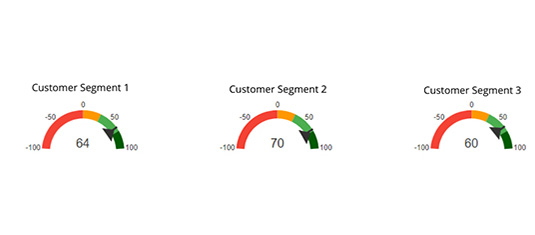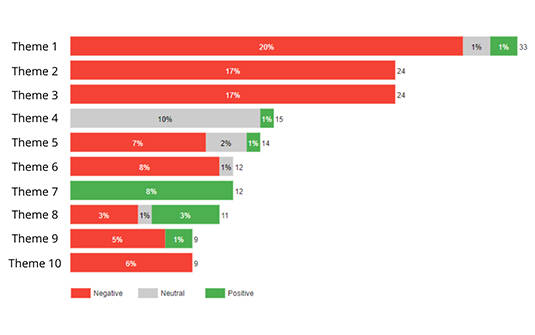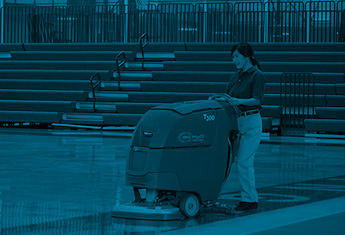Your shopping cart is empty.
Improve Business With Customer Feedback
Posted in Staffing & Personnel, Best Practices, Industry News & Trends,

Have you ever purchased something online and received a survey asking how likely if would be that you would recommend the brand or company to your friends or family? If so, you were probably participating in that company’s Net Promoter Score initiative, which is one way to collect feedback about how customers view your product or brand.
A positive customer experience is an important part of the success of a business, and NPS is a relatively easy and cost effective way to collect information on your customers’ experiences with your brand.
Let’s learn a bit more about NPS and how you can use it.
What is NPS, and why is it important?
NPS or Net Promoter Score is a simple but powerful tool to measure customer satisfaction by asking a single question - “How likely would you be to recommend the brand/company to your friends, colleague, and/or business partner?” and getting respondents to use a scale of 0-10 to rate the brand/company where ‘0’ means ‘Not at all likely to recommend’ and ‘10’ means ‘Extremely likely to recommend.’
Based on the rating, the respondents are classified as follows:
- Detractors = score of 0-6
- Passives = score of 7-8
- Promoters = score of 9-10
NPS (Net Promoter Score) = % of Promoters - % of Detractors
Asking respondents a follow-up open-ended question to provide reasons for their rating can be extremely valuable to understand exactly what is making them happy or unhappy.
At a high level, NPS measures customer retention and advocacy for the brand/company and quantifies customer loyalty.
Measuring and tracking NPS can be very beneficial for companies to understand how satisfied their customers are across key touch points of their journey, identify opportunities for improvement and drive continuous improvement over time by focusing on aspects that are most important to customers.
What are things you can do to improve your company’s NPS?

Opportunities for improvement can be short-term as well as long-term. To use NPS information, you will need to set up a process to monitor issues/complaints from detractors and resolve them in a timely manner.
Automated alerts can be set up to go to the right teams/individuals when customers give a low score (typically 0-6) so appropriate actions are taken.
In the short-term, resolving issues quickly and responding to customers can go a long way in gaining their trust and loyalty.
Longer term, you can identify broader themes coming out of the open-ended responses and identify and prioritize areas to improve overall customer satisfaction and experience. Setting goals for your NPS and tracking how specific initiatives/programs developed for improving customer experience are performing are important ways to impacting the overall score and determine if it’s moving in the right direction.
It’s also important to listen to Promoters to understand what is going well, know your strengths and ensure you leverage that across all customers.
What types of companies can benefit from implementing NPS surveys?
All companies can benefit from implementing this program. It gives an avenue for customers to provide their feedback and for you to keep a pulse on your customers. For B2B companies, this process can be a bit more complex, as the decision-making is typically shared across multiple stakeholders. Therefore, it is important to get feedback across multiple touchpoints and multiple stakeholders across customer organizations to get a well-rounded view of customer perceptions.
How can NPS feedback help you improve your customer experience?
To improve customer experience, first you need to understand what is working well and what is not. Without having visibility to that it is not possible to invest wisely on the things that would matter the most in improving customer experience. Listen to Promoters and replicate why they are satisfied for all other customers. Listen to Detractors to understand the issues or pain points and try to address them in a timely manner. Establish a process to follow-up and close the loop with customers to provide a consistent customer experience.
It’s also helpful to look at NPS by various customer segments or groups to understand which segments are most satisfied and why, and which ones are least satisfied and why. Also, it’s important to monitor the trend overall and by customer segments, regions, or channels to take appropriate actions for improving the experience.
How do you consolidate NPS survey feedback to make improvements?
Consolidating all the feedback will help to identify areas of strength and areas of opportunities. Focus on the high-level themes but also understand the nuances which can help develop programs/initiatives that would improve the experience. Tagging open-ended responses with keywords/phrases can be helpful in organizing the feedback into themes.
Examples of how NPS input triggered an initiative or change in process.
At Tennant Company, NPS feedback has helped us to identify automation opportunities that will have a positive impact on customer experience.
Additionally, NPS dashboards are shared with key stakeholders and leaders who can take appropriate actions to drive continuous improvement. For example, Tennant’s service organization tracks NPS regularly, down to the geographic area level, and uses the feedback to coach service technicians as well as to reinforce the positives and motivate them to deliver a superior customer experience on a consistent basis.
What is needed to collect this feedback? (processes, technology, etc.)
A simple survey software tool that has the capability to embed the NPS question and provide reporting/dashboard capabilities to access results in real-time. For global companies, it might be important to select a tool that will support multiple languages.

Grouping detractors into themes can help you make changes to improve these scores.
Identify the touch points to collect feedback on and leverage internal customer contacts database for sending surveys. Automate the process for triggering online surveys based on key events and establish a cadence for sending out surveys. More sophisticated companies can integrate the tool with their internal application (API) to manage the feedback process from end to end. Establish cooldown rules that will prevent sending surveys to same customer contacts within a specific time period.
How can a company get started collecting this feedback?
Before even getting started, it would be important to get executive buy-in and ensure they understand, agree, support, and take interest in the NPS program. Once you obtain executive/leadership buy-in, then
- Identify customer touch points and the right customer contacts to obtain feedback from.
- Develop your NPS system – tools, processes, methodology (online or phone or other or a combination), links between NPS survey questions and company Key Performance Indicators.
- Create a closed loop system – an effective and efficient method to follow-up with customers and commitment from front-line staff to resolve the issues quickly and commitment from leadership to create and provide appropriate systems for recognition, communication and ensure the NPS results remain in line with strategy deployment.
Last but not the least, once you establish an NPS program and start tracking results, avoid comparing your NPS to industry benchmarks as there are several factors that can influence the score and an apples-to-apples comparison is impossible. Even within the same company, comparisons across regions/countries must be avoided as there are cultural aspects that strongly influence how people use the rating scale across countries which can impact the NPS. The best practice is to establish your own baseline, monitor progress over time and focus on improving internal processes to become a more customer-centric organization.
RELATED LINKS
Ready to take your cleaning to the next level?
Whether you are requesting a product demonstration or a quote, ordering parts, or making a service appointment, you've come to the right place. Tennant professional representatives are ready with answers to your questions, and we look forward to showing you how much we appreciate your business.




